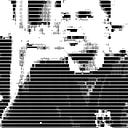When a user is happy the designer has done their job—A brief overview of UX
UX 101
User experience design can be summed up as the entire experience and perception a person has with a product or application. Such as how it looks, how it functions, how easy it is to use, where and how information is organized, and how well it satisfies a want or need.
What is a UX Designer?
In short a UX designer is someone that practices specific methods and techniques for researching users want and needs and then designing products and services to fill those wants and needs. Our daily lives are heavily influenced by technology, therefore how easy or difficult it is to use this technology is what matters the most, and that is the core of a UX designers role.
What makes up UX Design?
UX design is comprised of several disciplines. Those disciplines are user researcher, interaction designer, information architect, visual designer, and content strategist / copywriter.
A user researcher is someone who conducts qualitative or quantitative research to gain a better understanding of users motivations, attitudes, behaviors, pain points, and so on.
An interaction designer or information architect are both responsible for how a users moves through a complex system. The interaction designer will design things such as on-screen interactions and work flows. While the information architect structures data and focuses on findability.
Visual designers focus on creating the visual aspect of products or apps, things such as colors, typography, informational hierarchy, and other elements that make up the visual design.
Content strategist / copywriters create the voice and tone of the product or application. They are in charge of content across the entire project. They make sure content is consistent and assists the overall UX.
History of UX Design
UX design can be dated back to the early 1900’s when people like Frederick Winslow Taylor and Henry Ford were working on revolutionizing human labor. They were both focusing on ways to make the workers efforts more efficient and productive. Frederick Winslow Taylor did a significant amount of research in this area and ended up becoming known as the father of Scientific Management, aka Taylorism.
The next major breakthrough in the history of UX design was when researcher Paul Fitts examined airplane pilots and their interactions with the controls in the cockpits. It was his work that revamped airplane cockpits to this day. And that work became one of the primary principles of UX design, better known as Fitts Law. Which states that the time it will take to get to a target will be determined by the distance and size of that target.
Toyota played a crucial part in the evolution of UX design as well. Their philosophy was “respect for people”. Therefore they worked diligently to refine their manufacturing processes and encouraged workers to play a part, welcoming any and all solutions towards improvement.
Roughly around the year of 1955, Designing for People was a book by industrial designer Henry Dreyfuss that furthered the principles of human centered design. Which stated that when a user was unhappy with a product or service then the designer has failed, however if a user is happy with a product or service then the designer has done well. Around this time cognitive science was also born. Cognitive science focused on human’s short term memory and the use of AI and machine learning.
Subsequently after that in the 1970’s a research group at Xerox developed PARC which is responsible for many of the things we see today in human centered design such as the GUI, the mouse, and bitmap graphics. But it was not until the 90’s when Don Norman coined the phrase “user experience design” while working for Apple. He wanted to cover the entire aspect of a humans experience with a system.
The difference between UI and UX
UI or user interface is often confused with UX. While UI is part of UX they are not the same. The user interface is the part of the experience where the user interacts with a digital product or application. User experience encompasses the entire gamut of that interaction.
Where do UX Designers come from?
UX designers are made up of many different disciplines and backgrounds. Some common backgrounds that make for good UX designers are web / software designers and developers, editors, journalists, copywriters, graphic designers, researchers, scientists, psychologists, engineers, product managers, and business analysts.
While this is not the end all be all list of people that make up UX designers, people with these backgrounds tend to transition into UX design easily because they are already focused on an aspect of what makes up UX design as a whole.
